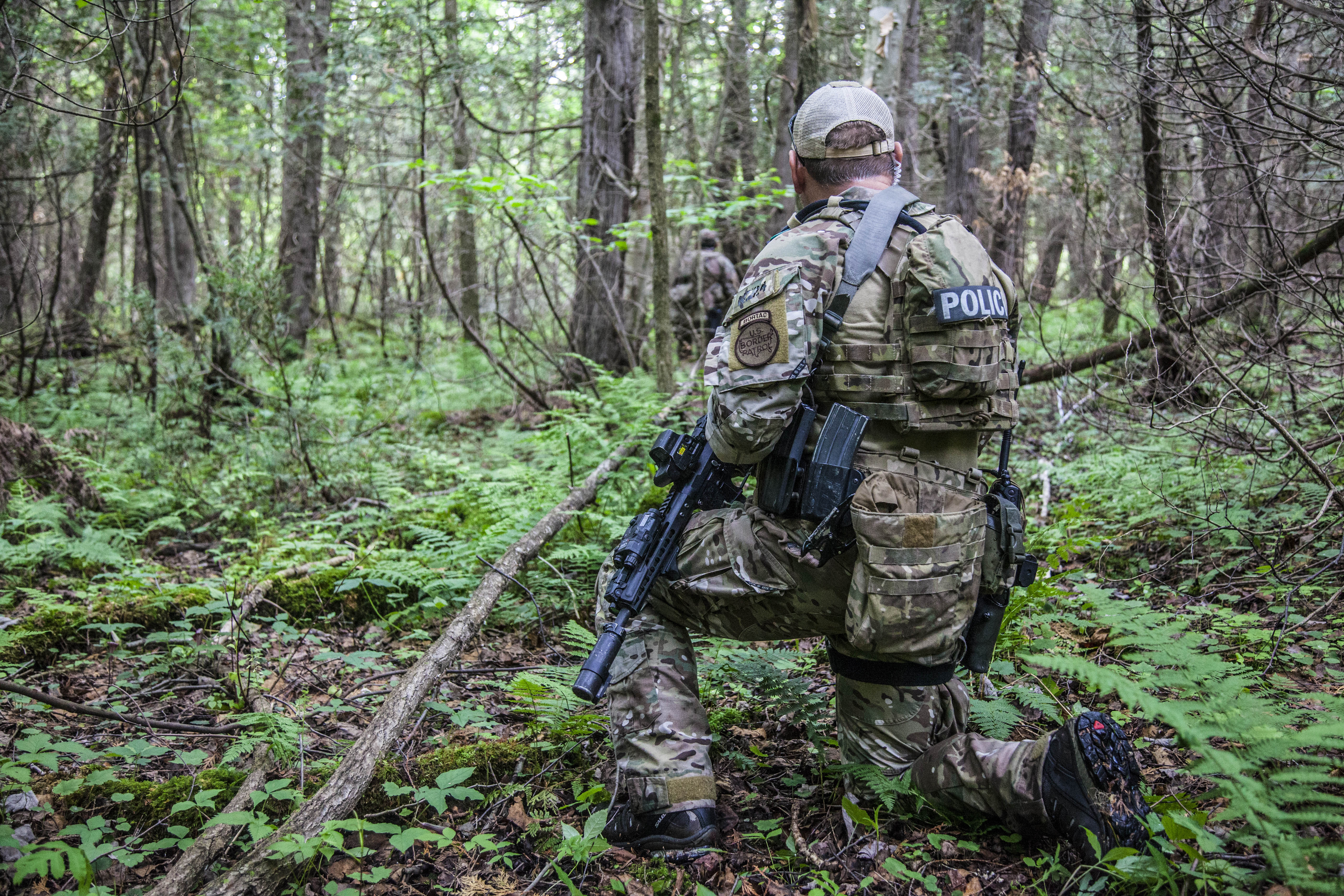
Manhunt
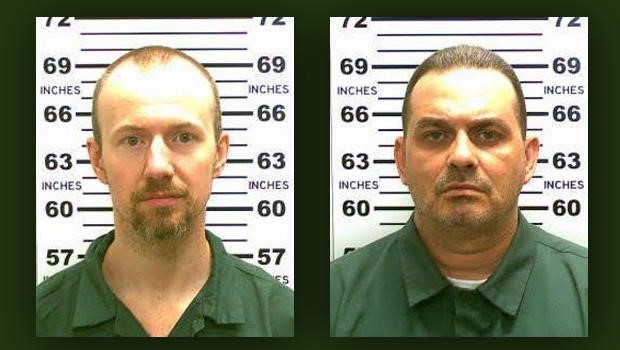
On the morning of June 6, 2015, New York State Police alerted law enforcement agencies of a breakout at the Clinton Correctional Facility in Dannemora, New York. After months of preparation, two convicted killers used tools to hack their way through the prison’s walls and pipes, crawled through a sewer and climbed through a manhole outside the prison walls to their final escape.
Richard Matt, 48, was serving a 25-year to life sentence for the kidnapping, torture and murder of William Rickerson, a 76 year-old Buffalo businessman. Failing to discover from Rickerson where he kept his money, Matt bent the elderly man’s fingers until the bones broke. Later, he broke Rickerson’s neck with his bare hands. Matt then used a hacksaw to chop up Rickerson’s body, and dumped the remains into the Niagara River. Rickerson’s dismembered torso was recovered from the river several days later.
David Sweat, 34, was serving a sentence of life without parole for the murder of a Broome County, New York, sheriff’s deputy. The deputy had caught Sweat and his cousin moving stolen guns from one car to another. Sweat and his cousin shot the deputy 15 times. As the deputy lay on the road bleeding, Sweat fired two shots into his face, using the deputy’s service pistol. Sweat then drove his car over the deputy as he fled the murder scene.
Out of prison and at large in northern New York State, authorities described Matt and Sweat as armed and extremely dangerous.
At Chateaugay port of entry on the U.S.-Canada border, U.S. Customs and Border Protection Port Director Virgil Farnsworth received news of the escape from state police and learned that the fugitives could be headed in his direction. “We started inspections of all outbound travelers a few minutes after they called us,” Farnsworth said.

Cross-border traffic at Chateaugay and other small ports in northern New York usually consists of farmers and local residents known well to CBP officers. With two criminals on the loose, CBP ramped up outbound inspections at border crossings at Trout River, Fort Covington, Chateaugay and Cherabusco, New York. “At that point, we didn’t know which direction the escapees were heading,” Farnsworth said. “We kept the outbound operations going continuously, 24/7, for the next 22 days.”
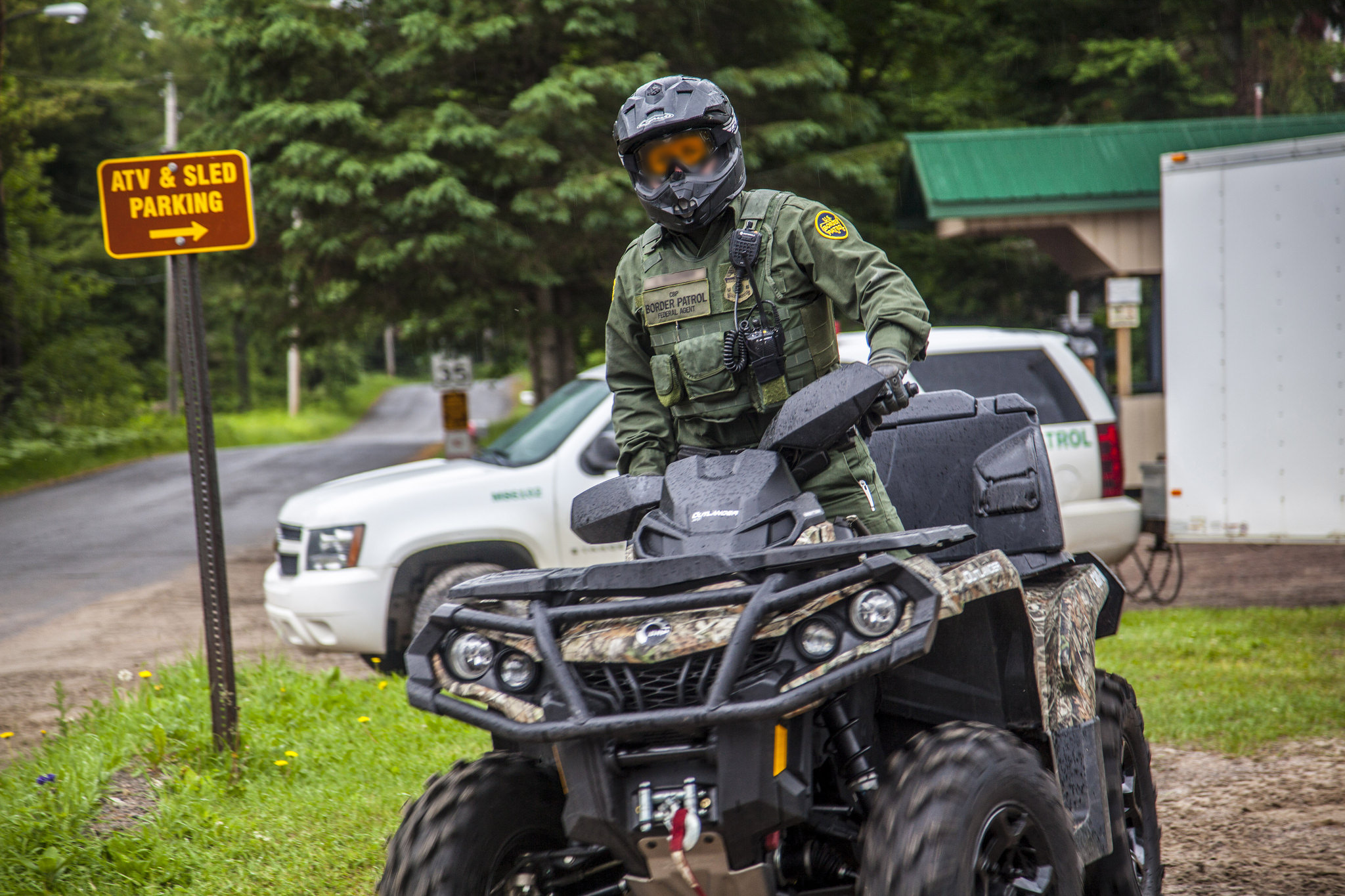
At the Champlain, New York, port of entry on Interstate Highway 87, Assistant Port Director Steve Bronson learned of the escape that day at 7:30 a.m. Champlain is a busy port on I-87 south of Montreal, along with a chain of smaller ports. Outbound inspections began by 7:45 a.m. at Cannon Corners port of entry, nearest to the prison. By 8 a.m., CBP officers were inspecting all outbound traffic at all area ports.
In Buffalo, CBP Acting Director of Field Operations Rose Hilmey began directing outbound inspections at all ports of entry west of the prison. “I wanted to ensure that these individuals did not make it to Canada,” Hilmey said. U.S. Border Patrol sector headquarters at Swanton, Vermont, maintained border security between the ports near the prison. Chief Border Patrol Agent John Pfeifer had received bulletins on the escape of Matt and Sweat and relayed their photos and descriptions to the Royal Canadian Mounted Police and Canada Border Services Agency. “It was pretty much an information campaign at that point,” said Pfeifer. “Given the violent history of Matt and Sweat, it was critical to get this information out immediately, so people would know who they were dealing with and who to call.”
At Border Patrol’s Champlain Station all-terrain vehicle unit, Border Patrol Agent Jerry Boucher deployed with his four-man crew to the search area. Normally assigned to ride the “slash,” a 20-foot-wide zone on the border cleared of trees, ATVs could search large swaths of terrain faster than foot patrols.

“I had a phone call telling me to load up at 4:30 a.m. the next morning and get the ATVs down to the search area. Between the noise from helicopters, barking bloodhounds and large number of law enforcement officers in the field, we knew we would have Matt and Sweat on the run,” Boucher said. Border Patrol’s station in Burke, Vermont, also deployed its ATV unit to the New York manhunt.
Thirteen miles southeast of Dannemora, at the CBP Air and Marine Operations base at Plattsburgh, New York, news of the prison escape reached the air interdiction agents. AMO pilots responded to state police calls for all available air assets. Air Interdiction Agent Gerhardt Perry was taking his children to a softball game when his supervisor called with news of the prison escape. “I took the kids to the coach’s house and said, ‘I have to go right now, would you mind taking the kids?’” Perry said. Shortly after, Perry and Air Interdiction Agent Chris Dobozy took off in an Airbus AS-350 A-Star helicopter and began an air search for Matt and Sweat.
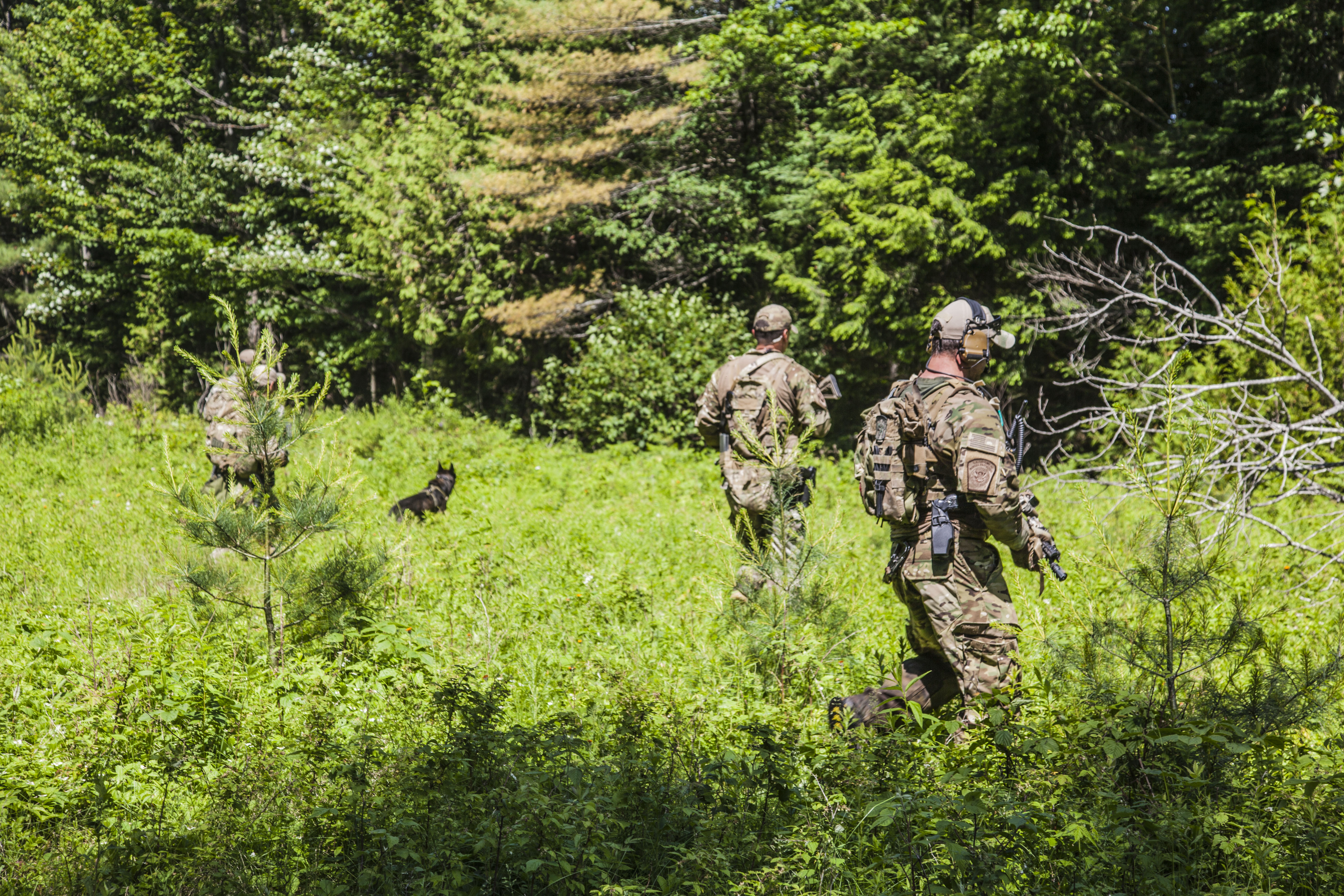
Back at Plattsburgh, Supervisory Air Interdiction Agent Robert Makowski received a New York State Police request for airborne surveillance imagery. “State troopers were hoping that our forward-looking infrared camera would help them see easier into the heavily wooded areas,” Makowski said.
Fixed wing aircraft, including a Cessna Citation C-550 and a Cessna C-206, launched from Plattsburgh to support law enforcement communications. Carrying radio repeaters, the AMO airplanes circled over the search area. The repeaters received and automatically rebroadcasted ground communications over the search area, extending signal range between searchers from yards to miles.
“Two airplanes flew 12 hours a day,” Makowski said. “Without our aircraft retransmitting ground radio signals from the air, searchers in the woods would have been cut off from each other.”
A Sikorsky UH-60 Black Hawk helicopter along with two flight crews from AMO’s Great Lakes Air and Marine Branch also deployed to assist in search operations.
Manhunt
Two days of searching by law enforcement had not yielded a solid clue on the escapees’ whereabouts. New York state agencies in the manhunt included corrections officers, state police, forest rangers and environmental conservation police. In addition to CBP officers and agents, other federal law enforcement officers joined the hunt from the U.S. Marshals Service, the FBI’s Hostage Response Team and agents from the Bureau of Alcohol, Tobacco, Firearms and Explosives. Canine teams from the state police, Border Patrol and FBI fanned out over the area, trying to pick up scent of the escapees.
Local police departments and sheriffs' deputies were on the lookout, along with tribal authorities along the border. A tip line set up by the New York State Police was receiving hundreds of calls each day from the public – every call was followed up by law enforcement. In Canada, the Royal Canadian Mounted Police were following up on leads from citizens living near the border.
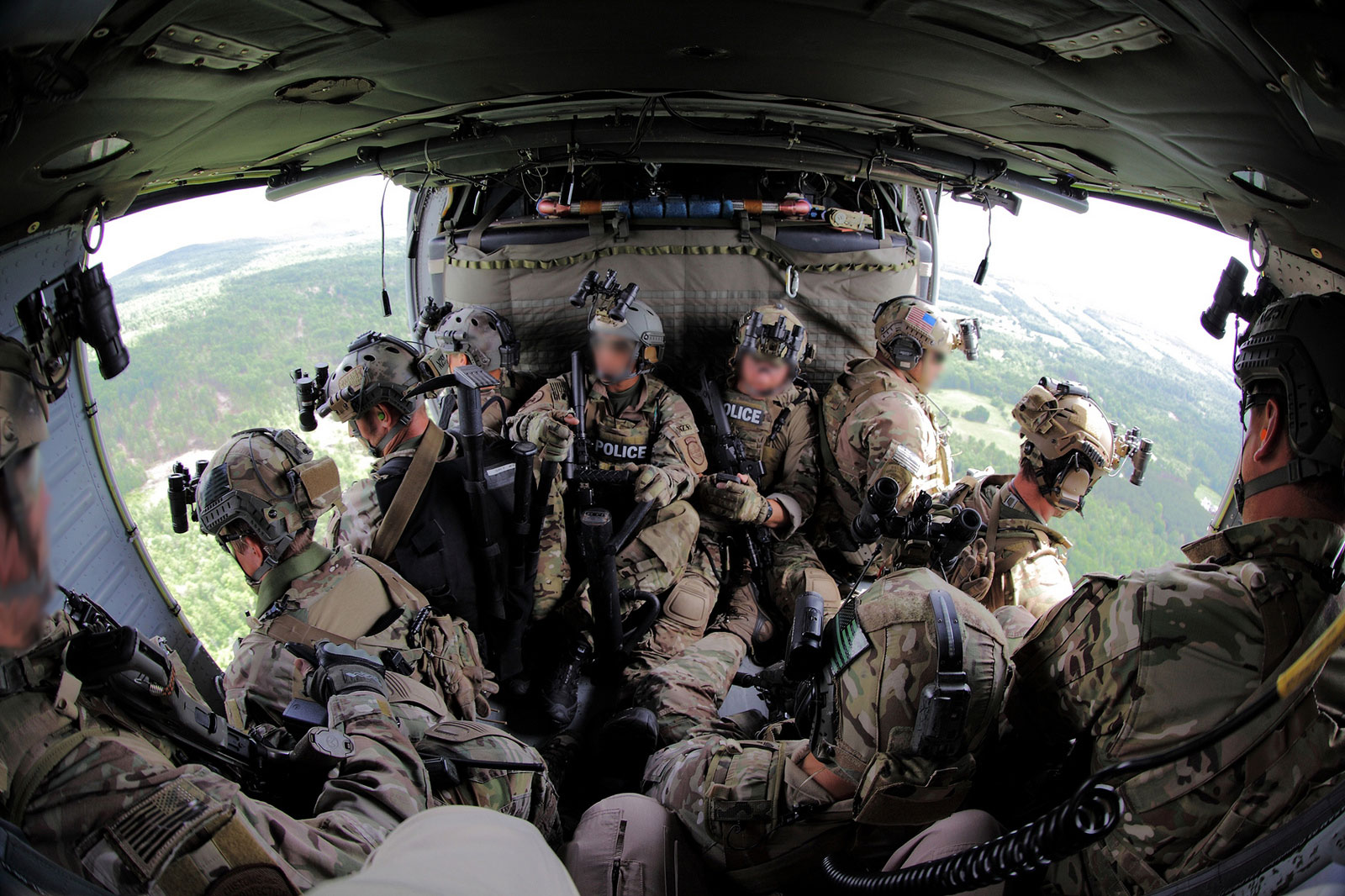
Border Patrol Tactical Unit (BORTAC) joined the manhunt June 9, combing search grids assigned by New York State Police. “Matt and Sweat had time on their side,” said Special Operations Supervisor Tom Woods, leader of the BORTAC elements assigned to Swanton sector. They had the terrain to their advantage, and the more time they were at large, the more distance they were creating.”
The density of the terrain was daunting. “There were no trails at all – it was bushwhacking all the way,” Woods said. “There were times you couldn’t see a foot either way.”
As law enforcement searched, torrential rains moved through the region, washing away any sign of the fugitives. “The weather was terrible during the manhunt,” said Woods. “We knew the rain was hampering us, but it had to be bothering the bad guys too. They had to be wet and hungry, and we were hoping the storms would help flush them out.”
New York State Police requested deployment of a second CBP special operations unit, the National BORTAC Team stationed in El Paso, Texas, which joined the manhunt on June 12. Acting Special Operations Supervisor Chris Voss recalled the first few days on the ground. “Time was the big thing. The fugitives escaped on June 6, and in five days could be anywhere,” said Voss.
At the ports of entry, CBP officers were temporarily reassigned from Champlain and the Buffalo Field Office to the smaller ports to bolster outbound inspections. National media had camped outside many remote CBP border crossings in satellite vans, looking for stories and trying to interview law enforcement officers and travelers.

Travelers at the Port of Champlain on I-87 were experiencing longer wait times due to outbound inspections on each side of the border. With two killers still at large, travelers remained patient and often expressed thanks for the increased level of vigilance. “People were concerned for the safety of their families,” said Port Director Farnsworth. “Many people told us they were sleeping with their shotguns.”
Frustration mounts
By June 17 the number of law enforcement officers in the search had swelled to more than 1,200 and tight coordination of resources was proving essential. Patrol Agent in Charge Norm Lague was detailed from Border Patrol’s Swanton Sector to join the team at the tactical operations center, or TOC. The TOC was directed by New York State Police and staffed by representatives of every agency in the manhunt. “It was the driver for the operation,” said Lague. Following up on tips from citizens, law enforcement deployed as many as 800 officers to clear different search grids several times a day.
“A lot of what we did was driven by tips from the public,” said Lague. “Richard Matt and David Sweat were doing a good job staying out of sight, avoiding mistakes that revealed their location until much later in the operation."
In the sky, AMO fixed-wing aircraft were flying 10 to 12 hours a day, extending the range of searchers on the ground. “One plane would launch, and another would launch several hours later. After coordinating, one plane would go back to refuel. The planes were constantly relieving each other,” said Air Interdiction Agent Gerhardt Perry.
Uncertain if the fugitives were still in the area, some agencies reduced their participation in the search on June 18. The BORTAC team from El Paso returned to Texas on June 19. Swanton Sector BORTAC operators remained, searching and clearing more than 100 hunting cabins. “We thought it was only a matter of time before Matt and Sweat made a mistake. There was no information suggesting the escapees were survivalists or hunters, or had the skills to move in the heavy woods. We stuck with the state troopers and kept searching,” said Tom Woods.
Though the number of searchers had dwindled, the manhunt had become methodically disciplined. “The New York State Police mustered as many assets and resources as they could, identified search grids, and one by one, cleared those areas. They ran a huge operation and did an outstanding job,” said Swanton Sector Chief Patrol Agent John Pfeifer.

Acting on leads generated by the tactical operations center, Border Patrol ATVs continued to patrol the dense forests. “The state police gave us a search point, and told us how many miles a person could travel from it on foot. We would draw a circle around that area, and hit the trail. We knew we would eventually find a sign if the fugitives were near,” said Border Patrol Agent Jerry Boucher. “That’s how the state police plan worked, and ultimately, it’s why Matt and Sweat didn’t get far.”
Leads continued to pour into the tactical operations center. Some people doubted the fugitives were still in the area. After considering such theories, state police focused on a single fact—nothing indicated the fugitives had left the area. “That was the mantra – we had to continue to pound the area. They had to be out there somewhere,” said Lague.
At long last, a breakthrough
The search area was dotted by hundreds of hunting cabins, most unoccupied in the summer. Visiting his cabin near Titus Mountain on June 20, the owner reported seeing a person running away into the woods. The sighting was the break state police were expecting. The cabin was only 10 miles from the prison. The cabin owner also reported a 20-gauge shotgun missing from the property.
State police converged on the cabin site, scouring the vicinity for sign of the escapees. They would not be disappointed.
“In their hurry to get away, Matt and Sweat left behind soiled socks and underwear,” said Special Operations Supervisor Tom Woods. After analyzing DNA from the abandoned clothing, state police confirmed the articles belonged to the escapees.
“Law enforcement surged right back up after that discovery,” said Lague. “At that point, we knew where they were, and that was the breakthrough we needed.” More than 1,300 law enforcement agents and officers rejoined the manhunt. The El Paso BORTAC team flew back to New York June 22.
Voss, the acting BORTAC supervisor from El Paso, and his team returned to the field, searching the wilderness for Matt and Sweat for four more days. On the morning of June 26, a citizen reported that someone had fired shots at his recreational vehicle. Supervisory Air Interdiction Agent Brian Hebert and Air Interdiction Agent Jim Pontzer loaded BORTAC operators into two helicopters, landing them on a highway to join state troopers near the area of the gunfire.
The aircrews, with air crew rifle operators onboard, remained overhead, providing top cover to BORTAC operators. AMO fixed wing crews established and maintained airborne command and control, providing communications between the operators and the tactical operations center.
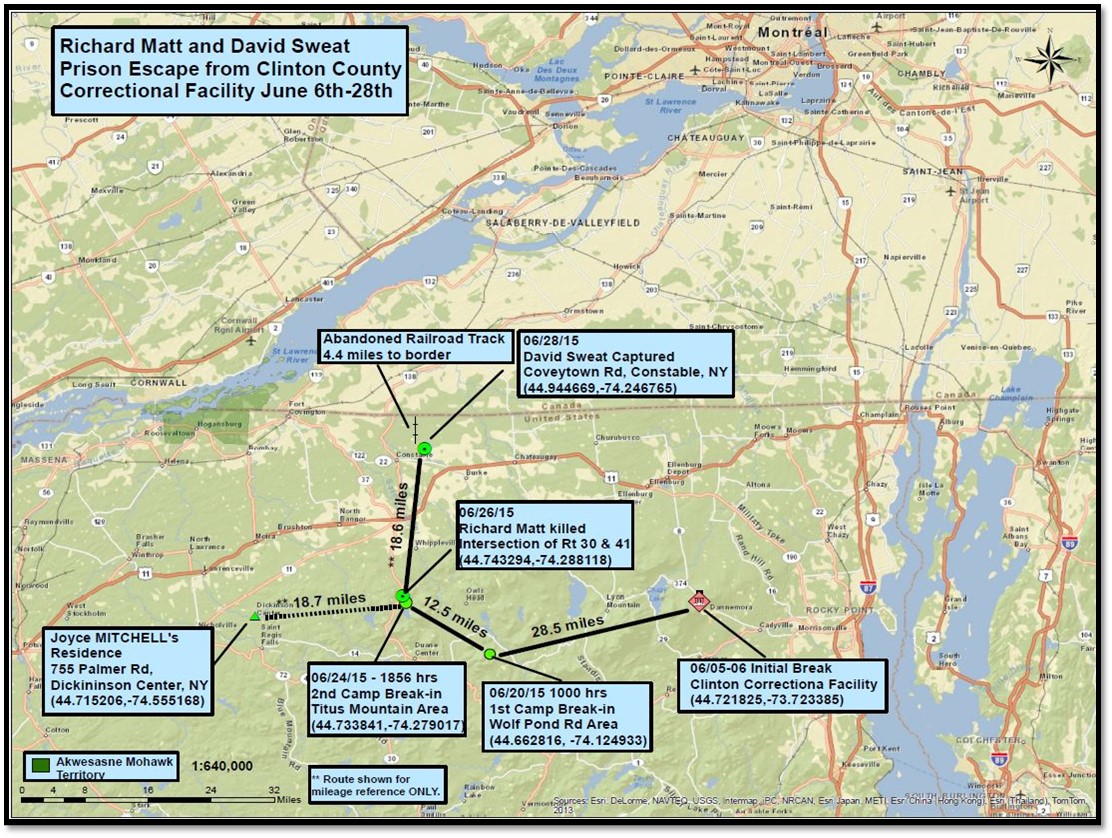
Moving through the dense terrain for two hours, the BORTAC team found a man deep in the woods, hiding behind a log. “My point man was the first person to see the subject,” Voss said. “The individual had his head down, and was flat on his stomach.” Voss maneuvered closer, keeping his eyes on the subject.
Voss knew this situation was different. “There was no response, no movement from the subject when my point man told him to put his hands up. I yelled at the subject to get his hands up – still no response. I thought, this could be the guy,” said Voss.
“From my position I could see the subject’s head coming up, and then I saw his face. He was moving something in my direction, but I couldn’t see what it was. As I moved in toward the subject, I saw he had a shotgun pointed right at me,” Voss said. “Once my brain made the equation of no response and the pointed shotgun, I began to shoot.”
“My point man maneuvered into a contact-cover position. I removed the shotgun from under the subject while my point man covered me. I did not want to disturb the weapon at a crime scene, but I definitely didn’t want to leave the gun too close to the subject,” Voss said. The rest of the team moved into the area and formed a perimeter around the log. BORTAC operators confirmed the subject was dead, and positively identified the body as Richard Matt by a tattoo that read, “Mexico Forever.”
Concern immediately shifted to where David Sweat could be hiding. State troopers expanded the perimeter around the log. Voss recalled, “The first thing that went through my mind was, ‘Where is the other fugitive?’ He could have us in his sights, ready to pull the trigger.” Following CBP policy, Voss left the scene for administrative duties while CBP ‘s Use Of Force Incident Team arrived to investigate the shooting of Matt.
BORTAC operators and state police continued to hunt for David Sweat. “They continued to search and clear other areas, trying to find Sweat, until they realized there wasn’t much to go on,” Voss said. The BORTAC team and state troopers withdrew to plan further on how to catch Sweat.
Two days later and 16 miles from where Richard Matt was killed, David Sweat was shot and wounded while trying to run from a state trooper. After 22 days of searching, the manhunt concluded when Sweat was finally taken into custody by New York State Police on June 28.
Relief
Supervisory Air Interdiction Agent Robert Makowski and other AMO pilots had been flying continuously since June 6. Learning that David Sweat was in custody “felt like 100 pounds had been lifted from our shoulders,” Makowski said. AMO crew members from the Great Lakes Air and Marine Branch, National Air Security Operations Center-Jacksonville, and Manassas Air Branch, including the Plattsburgh and New York Air Units, returned to their duty stations.
“We flew more than 300 incident-free hours during the manhunt. We knew exactly what to do, where to go, and how to proceed in the air search,” said Air Interdiction Agent Gerhardt Perry. Throughout the manhunt, AMO also coordinated flight operations with aircraft flown by the New York State Police and the FBI.
With the manhunt concluded, outbound inspections were ended at the ports of entry along the Canadian border. “Throughout the manhunt, law enforcement worked smoothly – it was the experience of a lifetime,” said Port Director Farnsworth.
“I was concerned about catching these individuals first and foremost, knowing CBP employees and the public were targets,” said Acting Director of Field Operations Rose Hilmey. “Our ports of entry immediately reacted to the threat of the fugitives, and sealed the border north of the prison. They knew what they needed to do.”
Swanton Sector Chief Pfeifer said, “I was relieved when I heard about Matt. I was concerned that someone in law enforcement would be hurt, because the pair had nothing to lose.” Pfeifer was in the sector radio room when the report came in of Sweat’s capture. “I was on the edge of my seat until we confirmed David Sweat was down and getting medical attention – and our agents were safe,” Pfeifer said.
Two days after Sweat was arrested, the town of Malone, New York, held a parade to honor law enforcement. Townspeople lined the streets and waved signs thanking officers for keeping their community safe.
Several weeks later, a letter arrived at Border Patrol Swanton Sector headquarters from William Rickerson, Jr., the son of the 76-year old Buffalo man murdered by Richard Matt. “The letter thanked us for our relentless pursuit of Richard Matt,” said Pfeifer. “I’ve been in law enforcement for 29 years, and I never received anything like this. It was powerful.”


